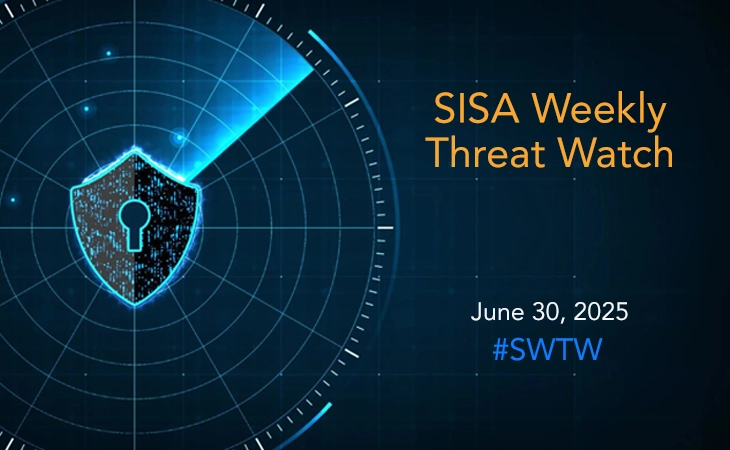
Red Team Exercise: Why Your Organization Needs One and How to Get Started
In an era where cyber threats are continually evolving, ensuring robust cybersecurity measures is crucial for organizations of all sizes. Traditional security measures like firewalls and antivirus software are essential, but they are not enough. This is where red team exercises come in – a simulated attack designed to expose vulnerabilities in your security posture before real attackers do. These simulations of real-world attacks provide a comprehensive evaluation of your defenses, revealing vulnerabilities and testing your response strategies. This blog will explore the importance of red team exercises, their purpose, and offer best practices for getting started.
Understanding Red Team and Its Purpose
A red team is a group of cybersecurity professionals tasked with simulating real-world attacks on an organization to test the effectiveness of its defenses. This team operates like an adversary, using the same tactics, techniques, and procedures (TTPs) as actual hackers. The primary purpose of a red team exercise is to uncover vulnerabilities and weaknesses in an organization’s security posture, providing valuable insights into areas that need improvement.
Red teams are often part of a broader security strategy that includes blue teams (defenders) and purple teams (a collaboration between red and blue teams). The red team’s role is to challenge the organization’s defenses, while the blue team focuses on defending against these attacks. This adversarial simulation is essential for developing a robust cybersecurity framework.
Read More: What is Red Team Exercise or Red Teaming? Explained By Experts
The Importance of Conducting Red Team Exercises
- Identifying Security Vulnerabilities: One of the main reasons to conduct a red team exercise is to identify security vulnerabilities that might be overlooked by traditional security assessments. By thinking and acting like an attacker, red teams can uncover gaps in defenses that automated tools and blue teams might miss.
- Testing Incident Response Plans: A red team exercise provides an opportunity to test your organization’s incident response plan in a controlled environment. This ensures that your team is prepared to handle real-world attacks, improving their response time and effectiveness.
- Enhancing Overall Security Measures: The insights gained from a red team exercise can be used to enhance existing security measures. This includes updating policies, implementing new technologies, and refining procedures to better protect against potential threats.
- Ensuring Regulatory Compliance: For many industries, regulatory compliance is a significant concern. Conducting regular red team exercises can help ensure that your organization meets the necessary standards and regulations, such as GDPR, HIPAA, or PCI DSS.
- Building a Security-Aware Culture: Red team exercises can help build a security-aware culture within your organization. By demonstrating the real-world impact of security breaches, employees are more likely to take security seriously and follow best practices.
Best Practices for Implementing a Red Team Exercise
Define Objectives and Scope
Before starting a red team exercise, it is crucial to define clear objectives and scope. Determine what you want to achieve, whether it is testing specific systems, evaluating employee awareness, or assessing the overall security posture. Clearly define the scope to ensure the exercise focuses on the most critical areas.
Choose the Right Provider
Selecting the right vendor or provider is essential for a successful red team exercise. Look for a team with a proven track record, relevant certifications, and extensive experience in conducting similar exercises. The right provider should also understand your industry’s specific threats and regulatory requirements, ensuring a tailored approach that meets your organization’s needs.
Learn More: SISA’s red teaming assessment helps co-op bank uncover critical security flaws
Develop a Detailed Plan
A successful red team exercise requires a detailed plan that outlines the methodology, tools, and techniques to be used. This plan should also include timelines, roles, and responsibilities, ensuring that everyone involved understands their part in the exercise.
Ensure Ethical Considerations
Red team exercises must be conducted ethically and within legal boundaries. Obtain the necessary permissions and ensure that all activities comply with relevant laws and regulations. Establish clear rules of engagement to protect sensitive data and systems.
Monitor and Document Activities
Throughout the exercise, monitor and document all activities meticulously. This includes recording the methods used, systems targeted, and vulnerabilities discovered. Detailed documentation is essential for analyzing the results and making informed decisions.
Conduct a Debrief and Analysis
After the exercise, conduct a thorough debrief and analysis with all stakeholders. Review the findings, discuss what worked well, and identify areas for improvement. Use this feedback to enhance your security measures and prepare for future exercises.
Implement Recommendations
The ultimate goal of a red team exercise is to improve your organization’s security. Implement the recommendations provided by the red team to address identified vulnerabilities and strengthen your defenses. This may involve technical upgrades, policy changes, or additional training for employees.
Read More: Penetration Testing vs Red Teaming Exercise: The Key Differences
Conclusion
A red team exercise is an invaluable tool for identifying vulnerabilities, testing incident response plans, and enhancing overall security measures. By simulating real-world attacks, organizations can gain critical insights into their security posture and make informed decisions to protect against potential threats. Implementing best practices and learning from these exercises will help create a robust cybersecurity framework, ensuring your organization remains resilient in the face of evolving cyber threats.
To explore the benefits of red team exercise for your organization and to begin on your journey towards developing a resilient cybersecurity posture, reach out to our experts today.
Frequently Asked Questions about Red Team Exercises
What is a red team exercise?
A red team exercise is a simulation of real-world cyber attacks conducted by cybersecurity professionals to test the effectiveness of an organization’s security measures.
Why is a red team exercise important?
It is important because it helps identify vulnerabilities, test incident response plans, enhance security measures, ensure regulatory compliance, and build a security-aware culture within an organization.
How often should a red team exercise be conducted?
The frequency of red team exercises depends on the organization’s size, industry, and specific security needs. However, conducting these exercises at least annually is recommended to keep up with evolving threats.
What is the difference between a red team and a blue team?
A red team simulates attacks to identify vulnerabilities, while a blue team focuses on defending against those attacks. Together, they help improve an organization’s overall security posture.
Can internal teams conduct red team exercises?
While internal teams can conduct red team exercises, it is often beneficial to engage external experts for an unbiased and comprehensive assessment. External teams bring a fresh perspective and specialized skills to the exercise.
Latest
Blogs
Whitepapers
Monthly Threat Brief
Customer Success Stories
 USA
USA India
India APAC
APAC Middle East
Middle East Global
Global






 Facebook
Facebook Linkedin
Linkedin  X
X Youtube
Youtube






